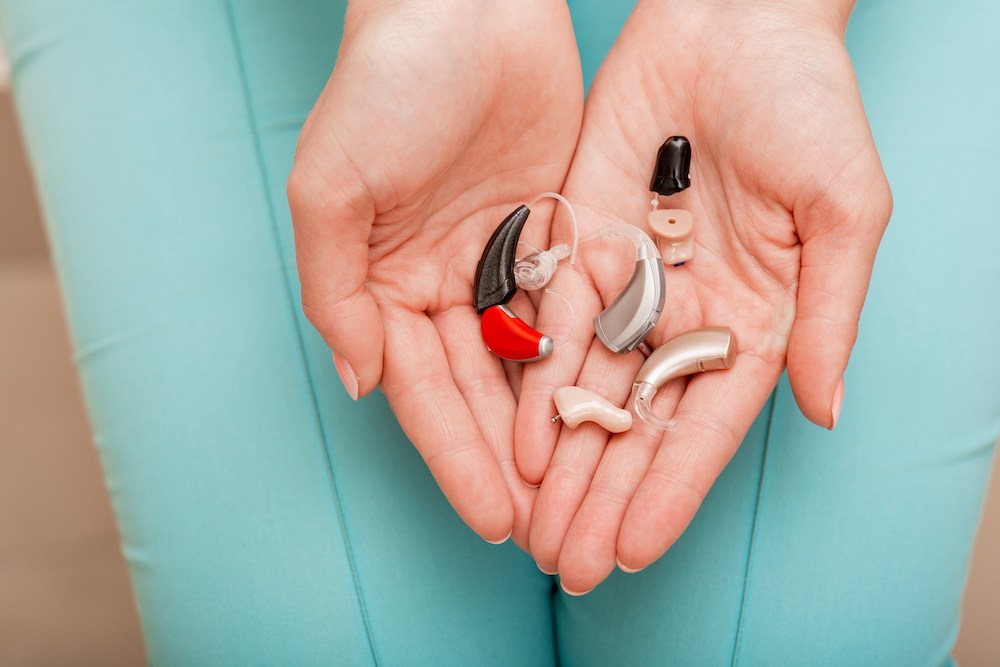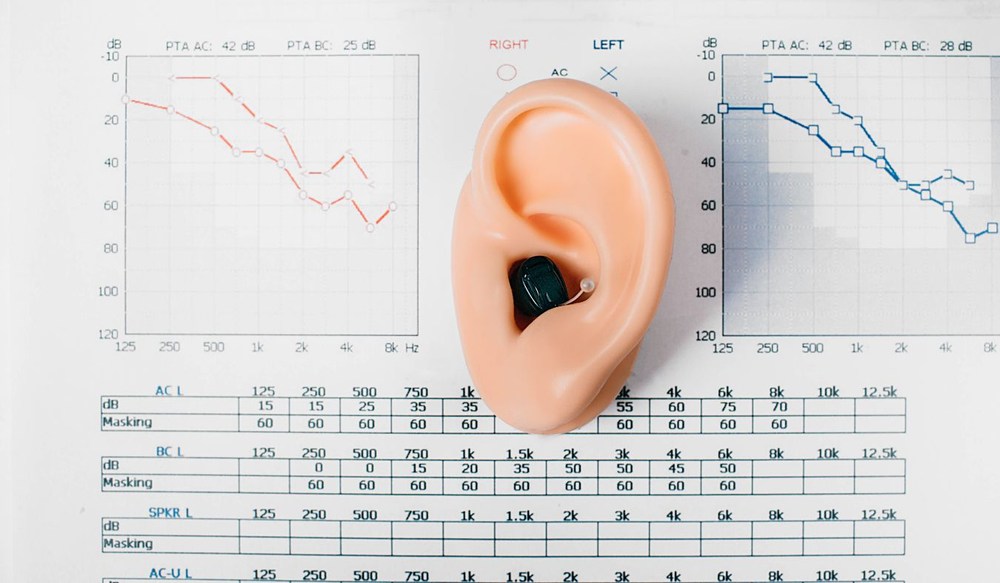Hearing Aid Innovations: What’s New in 2025?
Hearing aid technology continues to improve in ways that directly address

By: admin | July 29, 2025
Hearing aids used to be pretty straightforward devices with limited options. Now they’re packed with features that actually respond to what you’re doing throughout the day. They can tell the difference between you trying to have a conversation in a crowded room versus listening to music at home, and they adjust accordingly without you having to touch anything. Some connect to your phone, others can be controlled with apps and many learn your preferences over time.
More people are looking for hearing aids that do more than just help them hear better. They want devices that fit seamlessly into their daily routines and work with the technology they already use. This growing demand means we’re seeing new features and improvements hitting the market regularly, from longer battery life to better noise filtering to easier connectivity options. The goal is to create devices that make your life simpler, not more complicated.
Hearing aids have advanced significantly over time, starting with simple mechanical tools and evolving into sophisticated digital systems. Early hearing aids were nothing more than ear trumpets, designed to funnel sound into the ear without any form of amplification. These devices were bulky, highly visible and offered very limited benefit. In the early 20th century, the introduction of electronic hearing aids marked the first real breakthrough. These devices used carbon microphones and vacuum tubes to amplify sound but were still large and often required wearers to carry battery packs or wear the device strapped to their body.
The invention of the transistor in the 1950s dramatically changed hearing aid design. Transistors made devices much smaller and more reliable, allowing them to be worn behind the ear or even within the ear canal. This shift brought greater convenience, portability and improved sound quality. As technology continued to improve through the 1980s and 1990s, analog devices began incorporating basic customization features, like manual volume and tone controls. However, the biggest shift came with the arrival of digital signal processing. Digital hearing aids could analyze sound in real time, distinguish speech from background noise and offer more precise programming based on a person’s hearing profile.
Today’s hearing aids are smarter and more adaptable than ever. Many models include features like Bluetooth connectivity, rechargeable batteries, directional microphones, automatic environmental adjustments and even health tracking. These devices can stream audio from phones and televisions, learn wearer preferences over time and offer near-invisible designs for comfort and discretion. What once required frequent adjustments and in-person fine tuning can now happen automatically or remotely.
The difference between a basic hearing aid and a smart device comes down to how the technology adapts and responds throughout the day. Basic hearing aids typically amplify sound in a general way, sometimes with simple settings that can be adjusted manually. They provide consistent amplification but do not adjust automatically to changes in your environment. While they can improve speech clarity and make everyday listening more comfortable, they usually rely on you to manage the settings when moving between quiet and noisy places.
Smart hearing aids, by contrast, use advanced digital processing to respond to your surroundings in real time. They can detect whether you are in a conversation, walking down a busy street or sitting in a quiet room and adjust sound settings automatically. Many smart models also allow direct streaming from phones and other devices, and some include features like health tracking or remote programming through a mobile app. These tools give you more control, more comfort and a listening experience that feels more natural and less effortful throughout your day.
Today’s hearing aid wearers are looking for more than just louder sound. They want devices that fit naturally into their lives and adjust without extra effort. Smart hearing aids offer exactly that. Instead of reaching up to change a setting or struggling to follow conversations in a noisy room, you can rely on the device to make automatic adjustments. Whether you are moving from a quiet living room to a crowded café or taking a phone call on the go, the technology responds in real time to help you hear clearly wherever you are.
Many people also value how easily these devices connect with the tools they already use. Streaming calls, music or navigation directly from a smartphone into your hearing aids has become an everyday feature for many. Others appreciate the ability to monitor battery life, adjust volume or track activity from a simple app. These added features support not just better hearing but a more convenient and responsive daily experience. As hearing aids continue to advance, more wearers are choosing smarter technology because it helps them stay connected and in control without extra effort.
Hearing aid apps are now a key part of using smart hearing aids. These apps let you control settings like volume, sound programs and noise reduction right from your smartphone. You can save custom settings for different places, like home or work, so your hearing aids adjust automatically when you arrive. Some apps also provide reminders for charging or cleaning your device and allow you to send feedback to your hearing specialist for remote adjustments. This makes your hearing aid experience more personal and convenient.
Wireless technology lets smart hearing aids connect directly with phones, televisions and other digital devices. This means you can stream calls, music or even directions straight into your ears without needing extra accessories. Whether you are walking through the grocery store, watching your favorite show or on a video call with family, the sound is clearer and more direct. It simplifies everyday tasks and keeps your focus where it belongs, rather than struggling with volume or clarity.
This kind of direct streaming also supports a more active and confident lifestyle. You do not have to remove your hearing aids to wear headphones or adjust a TV to high volume. Instead, you can stay present in every moment with sound tailored to your environment.
Smartphone connections have changed how you use hearing aids every day. You can stream phone calls, music and directions directly to your ears. With smartphone apps, you can quickly adjust the volume or switch settings without extra help. This flexibility makes it easier to manage different situations, like talking in a noisy restaurant or listening quietly at home.
Controlling your hearing aids from your phone helps you feel more independent. It also makes it simpler to stay connected with family and friends throughout the day.
Artificial intelligence is changing the way smart hearing aids work and making them more effective every day. With AI, these devices can quickly analyze the sounds around you and decide how best to adjust. This means they respond instantly when you move from a quiet room to a busy street or from a conversation to background music. The goal is to make sure you hear what matters most without being distracted by unwanted noise.
One of the key benefits of AI in hearing aids is its ability to separate speech from background sounds. In noisy environments like restaurants, parks or social gatherings, AI helps make voices clearer while reducing sounds that can interfere with conversation. This makes it easier to follow what people are saying without having to ask them to repeat themselves or strain to listen.
AI also allows hearing aids to learn your personal preferences over time. By paying attention to how you adjust settings or respond to different sounds, the device adapts to create a more natural experience. This ongoing learning means your hearing aid becomes more tailored to your unique lifestyle, making it easier to stay engaged and connected in a wide range of situations.
Smart hearing aids today offer a range of comfort and design improvements that make wearing them easier throughout your entire day. Manufacturers have focused on creating smaller, lighter devices that fit snugly without causing pressure or discomfort. These sleek shapes are designed to follow the natural curves of your ear, reducing the feeling of bulkiness and allowing you to forget you are even wearing them. Soft materials and adjustable earpieces enhance the fit further, making it possible to customize your hearing aid so it stays secure without irritation.
In addition to comfort, many smart hearing aids now feature sweat-resistant coatings and durable finishes. This helps protect your device during exercise or in humid environments, so you do not have to worry about damage from moisture. For those who prefer a discreet look, nearly invisible styles are available, designed to blend seamlessly with your skin tone or hair color. These subtle options allow you to wear your hearing aids with confidence, knowing they are both functional and unobtrusive. All these updates work together to provide a reliable experience that supports your hearing needs while fitting smoothly into your lifestyle.
Remote support services have altered the way you can get assistance with your hearing aids. Instead of scheduling an appointment and traveling to a clinic, you can connect with your hearing care team right from home using phone calls, video chats or specialized mobile apps. This technology allows the professionals to access your hearing aid settings remotely, making precise adjustments based on your feedback without the need for an in-person visit. Whether you need volume changes, program updates or troubleshooting, help is just a few clicks away.
This convenience means issues can be addressed quickly, often the same day, saving you time and effort. It also reduces the stress of managing your hearing aids since you do not have to wait for the next available appointment to get the support you need. Knowing that expert help is accessible wherever you are builds confidence in your hearing care, making it easier to maintain your device and enjoy clear hearing every day. Remote support bridges the gap between you and your hearing professionals, ensuring ongoing care fits smoothly into your routine.
Hearing aids have come a long way from being simple sound amplifiers to becoming smart devices that adapt to your everyday life. They now work quietly in the background, adjusting to different sounds and environments so you can focus on what matters most without interruption. Whether you are enjoying music, having a conversation in a busy setting or using your phone, these devices learn your preferences and make changes automatically. This level of convenience helps you stay connected and confident throughout your day.
If you want to explore how modern hearing aids can support your lifestyle, we are ready to guide you. Contact Siouxland Hearing Healthcare in Sioux City, IA at (712) 266-3662 to find out about the latest options designed to fit seamlessly with your daily routine. We are here to help you hear better with devices that are smarter, more comfortable and easier to use.
Tags: benefits of hearing aids, hearing aid repair, hearing aid styles

Hearing aid technology continues to improve in ways that directly address
By: admin | October 20, 2025

Hearing aids used to be pretty straightforward devices with limited
By: admin | July 29, 2025

Your hearing aids are with you all day, every day, so they need to work as
By: admin | June 20, 2025
